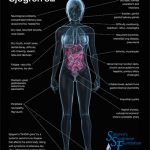NEW YORK (Reuters Health)—Geolocation and ethnicity exert a “strong influence” on the phenotype of primary Sjogren’s syndrome, researchers report.
“The influence of ethnicity on the phenotypic expression of systemic autoimmune diseases has been suggested by various studies, especially in systemic lupus erythematosus, which has been reported as being more frequent and having less favorable outcomes in non-white populations,” note Dr. Manuel Ramos-Casals of the University of Barcelona Hospital Clinic in Spain and colleagues.
“With respect to the influence of geographical factors, a potential north-south gradient in the frequency of autoimmune diseases has been suggested. In primary Sjogren’s syndrome, there is no information on the influence of ethnicity or geolocation on the phenotypic expression of the disease,” they write in Annals of the Rheumatic Diseases, online November 29.
To investigate, the team analyzed information from the Big Data Sjogren Project, “an international, multicenter registry designed in 2014 to take a ‘high-definition’ picture of the main features of primary Sjogren’s syndrome at diagnosis by merging international Sjogren’s syndrome databases,” Dr. Ramos-Casals told Reuters Health.
“All patients fulfilled the 2002 American-European Consensus criteria, which include a standardized definition of the main diagnostic tests (oral, ocular and salivary biopsy), ensuring a homogeneous diagnostic approach,” he said by email.
The study included 7,748 women (93%) and 562 men (7%), with an average age of 53 at diagnosis. Ethnicity data were available for 7,884 (95%): 6,174 patients (78%) were white; 1,066 (14%), Asian; 393 (5%), Hispanic; 104 (1%), black/African-American; and 147 (2%) were of other ethnicities.
Among the findings: primary Sjogren’s syndrome was diagnosed an average of seven years earlier in blacks/African-Americans compared with white patients. The female-to-male ratio was highest in Asians (27:1) and lowest in blacks/African-Americans (7:1).
A north-south gradient was identified: northern European countries and Asia had a lower frequency of ocular involvement compared with southern countries. Specifically, a lower frequency of dry eyes (OR, 0.46) and abnormal ocular tests (OR, 0.44) was seen in northern European countries; similar lower frequencies were seen in Asia for dry eyes (OR, 0.18) and abnormal ocular tests (OR, 0.49).
Higher frequencies of antinuclear antibodies (ANAs) were reported in northern countries in the Americas (OR, 1.48) and Asia (OR, 3.80); in Europe, northern countries had lower frequencies of ANAs (OR, 0.67) and Ro/La antibodies (OR, 0.69).
Dr. Ramos-Casals said, “The present study suggests, for the first time, that geolocation may influence the phenotypic expression of primary Sjogren’s syndrome at diagnosis, including significant geoepidemiological variations in the gender distribution, mean age at diagnosis of the disease, prevalence of dryness, the frequency of abnormal diagnostic tests and the positivity of the main immunological markers.”
